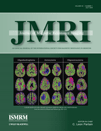Cine cardiac imaging using black-blood steady-state free precession (BB-SSFP) at 3T
Abstract
Purpose
To propose a new black-blood (BB) pulse sequence that provides BB cine cardiac images with high blood-myocardium contrast. The proposed technique is based on the conventional steady-state free precession (SSFP) sequence.
Materials and Methods
Numerical simulations of the Bloch equation were conducted to compare the resulting signal-to-noise ratio (SNR) to that of conventional BB imaging, including the effects of changing the imaging flip angle and heart rates. Simulation results were verified using a gel phantom experiment and five normal volunteers were scanned using the proposed technique.
Results
The new sequence showed higher SNR and contrast-to-noise ratio (CNR) (≈100%) compared to the conventional BB imaging. Also, the borders of the left ventricle (LV) and right ventricle (RV) appear more distinguishable than the conventional SSFP. We were also able to cover about 80% of the cardiac cycle with short breath-hold time (≈10 cardiac cycles) and with reasonable SNR and CNR.
Conclusion
Based on an SSFP conventional sequence, the new sequence provides BB cines that cover most of the cardiac cycle and with higher SNR and CNR than the conventional BB sequences. J. Magn. Reson. Imaging 2009;30:94–103. © 2009 Wiley-Liss, Inc.




